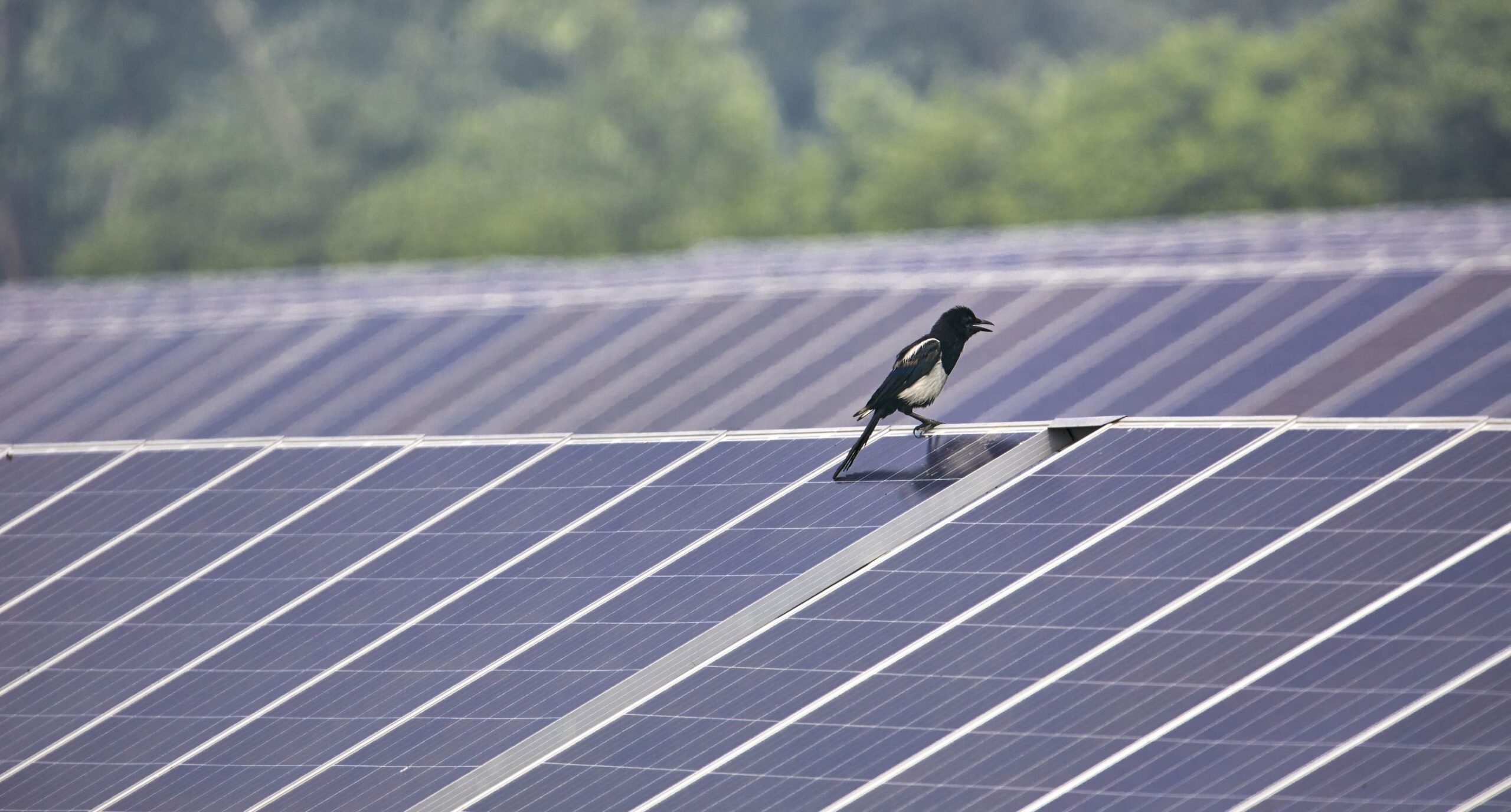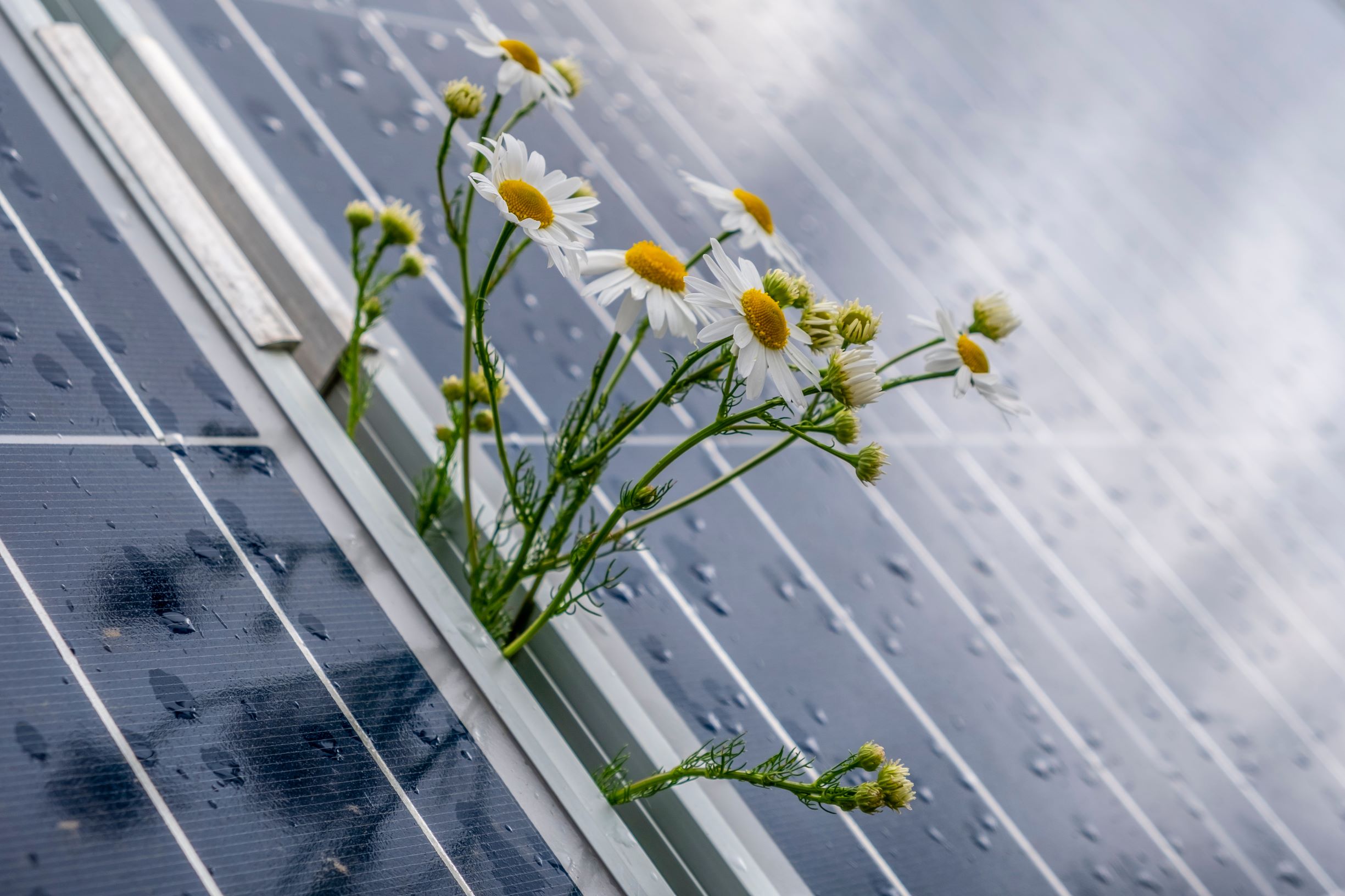28-04-2021
Filling a niche in both Hungary and in the region, the guidelines – prepared with extensive professional and sectoral cooperation – will provide practical advice for designing environmentally-friendly household-sized and large-scale solar power plants. According to an expert working for SolServices Ltd., the company launching the initiative, truly nature- and environmentally-friendly solar parks can be constructed with proper care and minimal extra investment, and furthermore, it is also beneficial for the investor to create such a new generation, nature-friendly solar power plant. Ágnes Takács trusts that the introduction of best practices and the presentation of new-generation solar parks to the professional and wider public will be convincing enough to illustrate that solar parks can be transformed into truly nature-friendly parks.
The goal of the white paper, prepared by professional associations, energy and green industry stakeholders as well as national park directorates is to promote the construction of solar parks in the most nature friendly way, fitting in with their environment. The special guidelines will offer a summary of international principles, results and best practices, a kind of collection of recommendations to the developers, investors and operators of solar parks. The white paper, primarily distributed electronically, but also in hard copies, will present specific technical solutions, procedures and tools.
Environmental awareness is not always enough
Experts preparing the guidelines intend to dedicate an attitude-forming, educational role to the niche compilation, which will highlight the importance of the ecological and environmental protection aspects of the construction and operation of solar parks. Solar parks have not yet been properly examined from this aspect in the Hungarian market, says Ágnes Takács, an expert at SolServices, the company launching the multi-disciplinary work.
Most of the companies engaged in solar energy in Hungary can be characterised as environmentally conscious, keeping sustainability on their agenda, but this is not always enough to ensure that the solar parks actually introduced by them are as nature-friendly as possible. However, if designed properly, they can easily be made nature-friendly, which is more than the already existing functions of protecting and maintaining biodiversity, and could thus have a truly positive impact on their environment.
According to the experts preparing the white paper, it pays off for everyone, including the investor, to create the solar park in a nature-friendly way, as in that case the environmental, energy-related and financial considerations can be applied at the same time. Accordingly, following the recommendations will neither materially increase the challenges of technical implementation, nor its budget.
Why is it worth an investor building an environmentally-friendly, new generation solar park?
Apart from the fact that such a park strengthens the green mission of the company, it may also result in some actual savings. Among others, the guidelines will address various types of lawn care, through which – after the first few years of transition – a self-sustaining lawn cover can be developed in the park area. This solution has a special significance, because then the number of human interventions can be reduced to a minimum, and so both the flora and the fauna can develop in an undisturbed environment for a longer time in the solar park and its vicinity, while at the same time this could also have a beneficial impact on lawn maintenance works, including costs. In addition, the white paper will also contain animal-friendly recommendations to minimise damages caused by larger game in the solar parks.
The guidelines with the expert recommendations include the possibility of ecological farming – for instance, sheep grazing – on the land of the solar parks. Ecological farming is a proven practice in agriculture, and therefore solid foundations for the introduction of nature-friendly solar parks have already been created in terms of both the tools and the implementation strategies. Putting it into practice is much simpler than many people would think, says Ágnes Takács.
The relationship of agriculture and the solar sector is still in its initial stage in Hungary and the region. Although solar power plants have also been spreading fast in the past few years in Hungary, and will appear in more and more locations, part of the people working in the agricultural sector consider them a potential threat, thinking that valuable agricultural lands may be lost in the near future. In reality, compared to areas extracted from agricultural cultivation for other reasons – for instance for industrial parks, factories, and residential areas – the percentage of land used for solar power plants does not stand out. Furthermore, domestic regulations are strict compared to European standards, providing a sufficient guarantee for the protection of arable lands, as well as the interests, values and traditions of the sector. It is therefore important to create a special “win-win situation” in Hungary, and the express goal of the white paper is to find the synergies between the two sectors, because there are good examples for co-developing the same area of land for both solar photovoltaic power as well as for agriculture.

Stimulation of the coexistence of environmental protection and electricity production
In Hungary the licensing of solar parks – depending on their size – belongs to the authority of national park directorates, independently of the fact whether the land is under protection or not. The document, attempting to achieve a balance between the expectations of investors and conservationists, makes recommendations in this regard as well, based on information from the affected parties. Green authorities, for instance, require that they are involved in the development process as soon as possible, so they can share information that cannot be obtained elsewhere with the investors. Such information includes the observation databases, accessible upon request, which record the occurrence of protected animals in a given territory for up to 20-25 years retroactively.
The appendix of the niche-filling white paper contains a list that collects all the databases relating to environmental protection available online, which could be useful for investors. In possession of this information, developers could conduct productive and successful negotiations with the institutions affected by the development, even at early stages of the investment.
Among others ALTEO Energy Services Plc., BioAqua Pro Ltd., Bükk National Park Directorate, Geohidroterv Ltd., Hortobágy National Park Directorate, Hungarian Professional Beekeepers’ Association and STS Group offered collaboration in the expert work initiated by SolServices Ltd., but other organisations have also proposed ideas. The recommendations can be useful for the development of both a smaller 0.5MW solar park and a 100MW one, but as Ágnes Takács explains, even those who wish to install a household-sized solar power plant in the backyard could find useful information in the white paper, which is expected to be published in the summer of 2021.
This article is available at portfolio.hu website in Hungarian. Published: 28 April 2021.
(Photos: Shutterstock)
